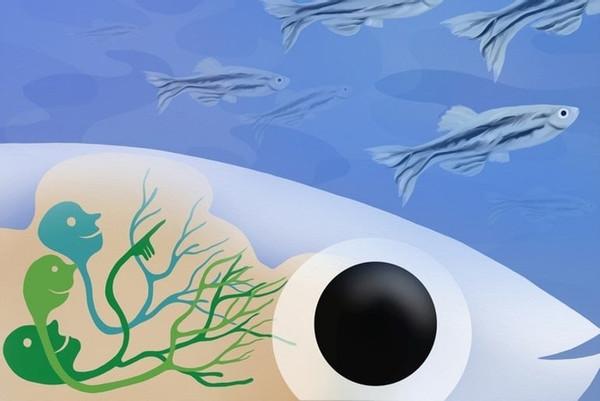There Is A Brain Network for Social Attraction
Curated from: neurosciencenews.com
Ideas, facts & insights covering these topics:
9 ideas
·1.93K reads
13
Explore the World's Best Ideas
Join today and uncover 100+ curated journeys from 50+ topics. Unlock access to our mobile app with extensive features.
Looking For Teammates: Mostly Consciously
Humans are famously social animals. But they are not alone in their tendency to team up with other individuals of the same species (conspecifics) to reach their goals. In fact, herds of mammals, flocks of birds, or shoals of fish are abundantly observed in nature. How does an animal’s brain recognize other animals of its own kind?
22
478 reads
“Knowing” Teammates: Mostly Unconsciously
Humans and many other animals live in societies. At a fundamental level, social interactions require individuals to identify others as belonging to their own kind. This usually happens in fractions of a second, often instinctively. Unveiling the neuronal circuits that underly this behavior, however, is anything but trivial.
20
405 reads
Actions And Reactions, Senders And Receivers
“There’s an inbuilt challenge in studying social interactions: For us as observers, actions and reactions are intermingled, both in animal behavior and at the neuronal level,” explains Johannes Larsch, neurobiologist and project leader in Herwig Baier’s department at the Max Planck Institute of Neurobiology.
“This is because individuals taking part in these interactions influence each other. Both are, at the same time, senders and receivers of social signals. It has been particularly hard to investigate the role of the visual system and its associated brain areas.”
20
246 reads
Visual Stimulus For Shoaling Behavior
Johannes Larsch’s team nevertheless found a way to elucidate the importance of the visual system in social interactions. The scientists developed an experimental virtual reality setup for zebrafish larvae that simulates conspecifics. All that was needed was a projected dot on a screen, which – and this is important – moved across the display with a jerky movement pattern that is stereotypical of swimming zebrafish.
20
187 reads
The Irresistible Visual Cue
The zebrafish larvae could not resist this cue: They followed it around for hours, apparently confusing the moving dot with a real conspecific. The researchers had thus discovered a defined visual stimulus that triggers shoaling behavior.
The team could now investigate the neuronal processing of the stimulus. The experiments revealed that a moving dot activates a specific set of neurons in a brain region known as the thalamus. The same area of the thalamus gets activated when another zebrafish larva swims nearby.
20
150 reads
The Brain’s Thalamus
“The thalamus is a sensory control center of the brain that integrates and relays sensory inputs,” explains Johannes Larsch. Sensory information is processed on its route to the thalamus, first in the retina and then in the tectum, a major visual center of the vertebrate brain.
By the time the information arrives in the thalamus, it has already been filtered for social cues, such as the jerky movements of a potential conspecific.
19
124 reads
Social Attraction And Affiliation
The nerve cells identified by the researchers in this region of the thalamus connect the visual system of the zebrafish with other brain regions that are active during social behavior.
The importance of the newly identified neurons was confirmed when the researchers specifically blocked the function of these cells. Zebrafish larvae lost their interest in conspecifics as well as moving dots and hardly followed them around anymore.
“The neurons we discovered thus regulate social approach and affiliation in zebrafish,” says Johannes Kappel, graduate student and lead author of the study.
20
111 reads
Humans Possess A Thalamus, Too
“… and many neuronal processes have been conserved during evolution. We also have brain regions that are active when we perceive facial movements or body motion, but the significance of these regions for social behavior has not been explored”, continues Kappel.
The study by Kappel, Larsch, Baker and their collaborators has shed light on a part of the brain whose activation provides the elementary “glue” for the bonding of two zebrafish. Collectively, such small-scale interactions create shoals of fish. Social behavior is driven by networks of brains, which are themselves networks of neurons.
19
100 reads
Self-Organization In Animal Societies
Concludes Baier: “Neurobiological findings, such as ours, can perhaps inspire and enrich the thinking about the self-organization of animal societies in general, which is currently the domain of other scientific disciplines.”
19
131 reads
IDEAS CURATED BY
CURATOR'S NOTE
A special network that runs from the eye’s retina deep into the brain may help mediate social attraction and affiliation, a new study reveals. It seems that “to see is to know”. But how would we feel about that if it partly or wholly explained our social behavior and relationships? What if we were the zebrafish of the experiment?
“
Xarikleia 's ideas are part of this journey:
Learn more about personaldevelopment with this collection
How to find purpose and meaning in life
How to cultivate gratitude
Techniques for managing negative thoughts
Related collections
Similar ideas
6 ideas
Why Is the Human Brain So Efficient?
nautil.us
4 ideas
Read & Learn
20x Faster
without
deepstash
with
deepstash
with
deepstash
Personalized microlearning
—
100+ Learning Journeys
—
Access to 200,000+ ideas
—
Access to the mobile app
—
Unlimited idea saving
—
—
Unlimited history
—
—
Unlimited listening to ideas
—
—
Downloading & offline access
—
—
Supercharge your mind with one idea per day
Enter your email and spend 1 minute every day to learn something new.
I agree to receive email updates
